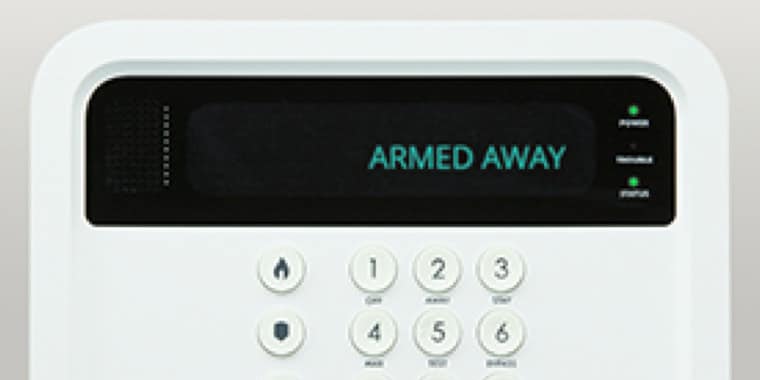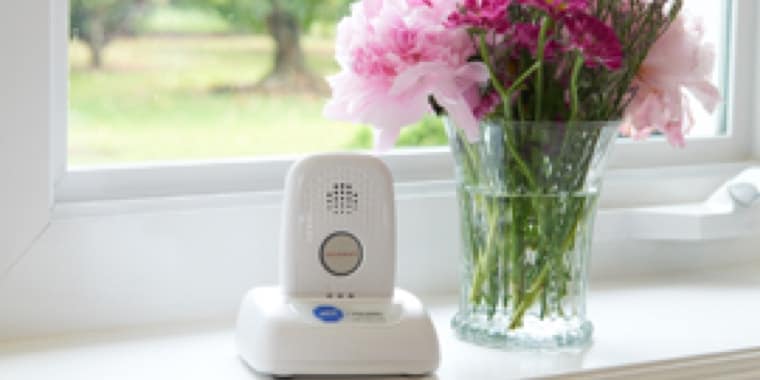COVID-19 is changing nearly everything about our daily habits, and our work lives are no exception. To keep workers safe and reduce the spread of the virus, more and more companies [1] are encouraging or requiring their employees to work from home (WFH).
Working remotely brings both new benefits and new challenges—and with a smart, thoughtful approach, you can maximize your upside and minimize any potential security risks.
Our top strategies to optimize your work-from-home experience, courtesy of Ron Culler, Senior Director of Technology and Solutions at ADT Cybersecurity:
Put your smart home security system to work
According to the FBI, a burglary happens every 22.6 seconds in the U.S. [2] And 88% of those burglaries occur in residential areas [3] with an increase during the day [4]. Those unaccustomed to being at home while distracted by work obligations may forget to lock their doors or windows, or neglect to arm their security systems. But just as offices are careful to keep their employees protected, take care to ensure the security of your home even as you’re working there. By leveraging smart devices like outdoor and doorbell cameras and motion detectors, your surroundings will be monitored automatically—so you can remain safe and focused on your work.
Only do work on corporate computers
Cybersecurity experts are quick to point out [5]: hackers are perfectly aware that more Americans are working from home than ever before. Among the new risks? Working remotely might tempt employees to default to their personal devices instead of using corporate-owned computers. The problem: your personal laptop likely doesn’t feature the antivirus software and monitoring systems that keep your work computer’s information secure. As much as possible, workers should use their work laptops for work and adhere to corporate-approved protocols, hardware and software—from firewalls to VPNs—to help avoid cyber headaches, especially if WFH policies last for extended periods of time. This includes keeping all work communication and data on your corporate-owned cloud and email systems.
Stay away from public WiFi networks
Encourage employees to take the time to ensure that their WiFi connection is secure, or else you run the risk of cyber-intrusions from third parties.
Train employees to detect scams
Scammers are getting crafty in preying on consumer fear, and it’s important to arm your employees with details on what to look for as phishing and spoofing messaging scams become more ubiquitous. If phishing attacks become an issue, consider sending out test messages to help train employees on identifying and stopping these attacks in the future.
And as the COVID-19 pandemic continues to dominate the newscycle, cybercriminals are capitalizing on societal shifts to gain access to personal information—targeting not only company employees, but all Americans surfing the web at home.
From an increased likelihood of data breaches to the prevalence of cleverly disguised misinformation, be wary of the following tactics hackers are using to take advantage of these uncertain times:
Cloned news platforms
Hackers are tapping into the latest technologies to create cloned news websites that mimic the real thing. Malware is integrated into those sites, hidden within video and audio links of false stories containing “critical information” about COVID-19. For instance, scammers recently [6] copied the Johns Hopkins University online map that tracks the virus’ spread in real time. To protect themselves, consumers should install antivirus programs to monitor devices, hover their cursor over links to ensure they lead to legitimate websites and always think twice before installing programs from links that are shared online.
Social media
As society works remotely and practices social distancing, social media consumption has grown [7]. But consumers need to be careful, as a tweet or Facebook post can contain malicious links seeking to install spyware. Social media has also been rife with misinformation, leading Pinterest [8] to introduce a “custom search experience” to remove misleading and false COVID-19 info on its platform. The National Security Council [9] also tweeted asking people to ignore text message rumors of a national quarantine. Social media users should double-check their sources as they consume information, deferring to verified government reports and reputable news sites.
Fake apps
Consumers should also be mindful of fake apps. CNET recently reported [10] on CovidLock, an Android app claiming to help users monitor the spread of the virus. It turned out to be malicious, locking Android users out of their phones and holding them for ransom by hackers. It’s critical to exercise caution when absorbing any information related to the virus.
Video conferencing software
Cybercriminals are hacking video conferencing platforms and joining meetings as they take place. According to TechCrunch [11], perpetrators hacked into a WFH Happy Hour and leveraged the screen-share feature to display horrific images and video content, alarming participants before they were eventually kicked out of the chat. As more people lean on video software to remain connected, it’s important that dial-in information isn’t posted in public forums where it can be easily discovered.
Increased likelihood of data breaches
The cruise and airline industries are suffering through some of the largest economic impacts related to COVID-19, and this makes them more vulnerable to hackers. Millions of people are either canceling or rescheduling their trips, creating the potential for hackers to intervene when customers are communicating with companies to get their money back. Both customers and travel industry employees should be vigilant for falsified messages during this unprecedented moment.
With smart planning, common sense, and a security-minded approach, you and your colleagues can make the most of the new WFH era. Stay safe, stay healthy, and check out our entire range of life protection products and services here [12].
Sources:
[2] https://ucr.fbi.gov/crime-in-the-u.s/2017/crime-in-the-u.s.-2017/topic-pages/crime-clock
[3] https://www.rent.com/blog/surprising-statistics-about-home-break-ins/
[4] https://www.alarms.org/burglary-statistics/
[5] https://www.us-cert.gov/ncas/alerts/aa20-073a
[6] https://www.tomsguide.com/news/coronavirus-map-malware
[7] https://www.alistdaily.com/social/coronavirus-social-media-increase/
[9] https://twitter.com/WHNSC/status/1239398218292748292
[10] https://www.cnet.com/how-to/online-coronavirus-scams-are-here-watch-out-for-these-red-flags/





